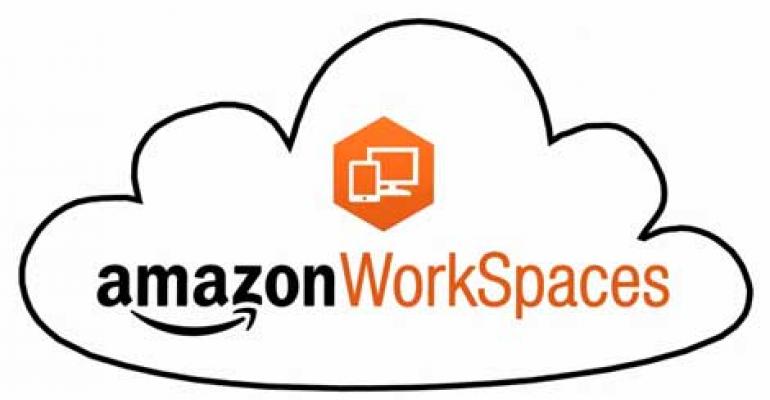A day after a shot across the bow from Google, it was Amazon's chance to unveil new features and pricing in the cloud wars. At the AWS Summit in San Francisco, Amazon announced new Instance families and the general availability of its virtual desktop offering, Amazon WorkSpaces. And, what a lot of people were waiting for, AWS responded to Google's price cuts by slashing its prices as well.
The biggest difference between Amazon and Google’s cloud presentations was the intended audience. Google targeted the tech savvy, while Amazon chose to cover, well, basically everyone. The company threw out so many customer examples that you could write a Russian novel-length rundown of who's using AWS.
AWS Slashes Prices
Amazon has lowered pricing 41 times since its inception. The 42nd reduction was a big one. “We take our large scale and pass that to customers,” said keynote speaker Andy Jassy, Senior Vice President at Amazon. S3 is dropping its pricing by 51 percent on average, while Elastic Compute Cloud (EC2) is lowering prices by about 10 to 38 percent, depending on the instance family. Amazon also announced price drops of 28 percent for its relational database service, and 27 to 61 percent for its Elastic Mapreduce caching service.
“Lowering prices is not new for us," said Jassy. "It’s something we do on a regular basis. Whenever we can remove cost in our cost structure, we pass it on. You can expect us to continuously do this.”
Pricing charts aren’t sexy, but the main takeaway is that the cloud providers with the most scale are aggressively cutting prices, as we saw with Google yesterday. The raw building blocks of computing are becoming commoditized. The key will be adding value atop of these compute resources. Amazon does this through the sheer number of services it offers, as well as the richest ecosystem of applications and developers in the cloud world.
Commoditization is a much maligned thing: the materials for building a house are all commodities, but it doesn’t mean I’ll buy the raw materials and build the house myself to save money. Price cuts shouldn’t be the main consideration, which is why both Google and Amazon didn’t lead with their pricing.
Amazon's price cuts are equally as aggressive as Google’s. Having lived through the hosting pricing wars of the 2000s, we’re seeing the same thing happening now with cloud pricing. However, the race isn’t only to the bottom of pricing, it’s to the top of features. And Amazon has a big head start, plus the biggest ecosystem out there to build out a lot of features.
WorkSpaces Enters General Availability
WorkSpaces is Amazon's Virtual cloud desktop offering. Managing desktops on premises is tricky and hard to deal with, which led to the creation of the VDI space. Most VDI solutions are expensive and put the management requirement on the end user.
“This was the request we got most frequently from companies,” said Jassy. “That’s why we launched Amazon WorkSpaces. It gives central management and security, without worrying about the hardware, infrastructure management and is half the price of other solutions.”
WorkSpaces launched in preview in November, and 10,000 customers have signed up since then. WorkSpaces is now available for everyone.
A demonstration was provided, which emphasized ease of use. The provisioning process takes 20 minutes to complete. The user gets an email, then downloads the client of their choice. Then they register their workspace, and login using the same username and password as the on-premise password.
The idea is to support todays mobile workforce. The “desktop” can move easily from a Mac to an iPad, for instance. Workspaces behave just like traditional desktops, no training needed.
Amazon also announced a refresh of the high storage instance family, named HS1. Storage throughput went from 2.6gps-3.6gps. The company also introduced a new memory optimized family called the R3. R3 has SSD storage, and an 8 to 1 ratio of memory to storage. It offers 1/3 better performance.
Customers, Customers, Customers
Amazon mentioned a plethora of customers, giving real world examples of how they are leveraging AWS in different ways. It really showed the maturity of the platform, and how Amazon has addressed pretty much any need under the sun.
The amount of new product announcements wasn’t huge, but that’s basically because Amazon already provides many of the features its customers need. The biggest missing ingredient has been the personal touch. Hosting providers offer consulting and high-touch services that AWS could not. Amazon has tried to address this, introducing a premium support function and professional services. It can offer a team that comes into your company to help figure out how to move workloads to the cloud. There’s also a lot of educational programs and certifications, ensuring a strong workforce.
“It’s not just the services, it’s features and capabilities in these services,” said Jassy. “We’re adding and iterating features at a fast clip.”
One example given was with RedShift, which launched February of 2013. Amazon has added a staggering 56 new features since then to RedShift alone. The company emphasized that these enhancements all happen behind the scenes, seamlessly.
The pace of innovation was highlighted. In 2007 Amazon Web Services offered there were 82 new services and products. In 2012 there were 159 new services and products added. In 2013 the company added 280 features and services. 2014 is on pace to beat 2013.
AWS touted Kinesis, its fully managed service for real-time processing of streaming data at massive scale. AppStream, which solves a major problem compute intensive applications and game face. With the explosion of mobile devices and mobile usage, developers are faced with a problem. Water down the graphically intense experience for the device, or stream it. AppStream allows you to stream. The company built their own network protocol that identifies network and device.





